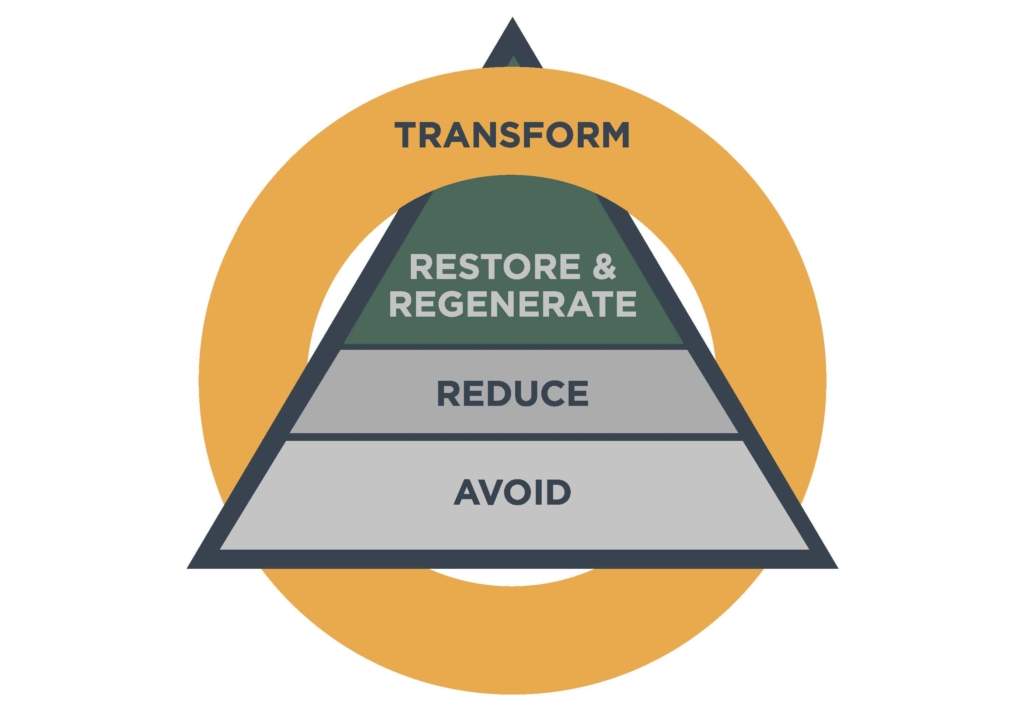
Science-based action for companies in support of global biodiversity goals
Between 7-19 December, governments will be meeting in Montreal at COP15 to adopt a global deal on nature: the Post-2020 Global Biodiversity Framework (GBF). The framework will include goals and targets for global society and will set the direction for both business ambition and action.
Ahead of COP15, Varsha Vijay, Technical Director at Science Based Targets Network (SBTN) explains how companies will be able to take science-based action in support of the GBF through science-based targets for nature.
Why is the Post-2020 Global Biodiversity Framework so critical and why should business care?
I think many of us either take it for granted or are unaware that nature is the foundation of our economy and our lives. And how many of us know that nature is also climate’s greatest ally – absorbing around half 1 of our carbon emissions a year?
But nature is in crisis: exploited, polluted, degraded or destroyed by human activity. Three-quarters of the land-based environment and about 66% of the marine environment have been significantly altered by human actions 2
But with no credible pathway 3 yet in place to meet the Paris climate agreement goal of halving emissions by 2030 and preventing the Earth’s warming beyond 1.5C, the Post-2020 Global Biodiversity Framework presents an immense and urgent opportunity for people and the planet.
It has the potential to be nature’s equivalent of the Paris Climate Agreement. With the Framework, negotiators and allies of the Convention intend to secure an ambitious global plan to halt and reverse nature loss by 2030 akin to the 1.5C goal for climate, as well as address the root causes behind the decline of nature.
If sufficiently ambitious, the GBF can play a transformative role for economic and financial systems — removing incentives for companies that harm the environment, changing the national and international expectations of corporate environmental stewardship, and establishing common metrics that can be used by actors throughout society (governments, businesses, academics and NGOs) to monitor the health of our environment.
Once adopted, the GBF will be translated into national policies, laws and regulation, with each country that is party to the convention held responsible for implementing the framework. As these policies become enshrined at national and regional levels, companies may find themselves ahead of the curve and prepared for more rigorous environmental regulation and action, or behind the curve and at a competitive disadvantage.
In a couple of sentences, how will science-based targets for nature help companies support the Global Biodiversity Framework?
Science-based targets for nature will equip companies with the tools to understand what their individual contribution should be, and how to take action, in support of the Global Biodiversity Framework. They will tell a company if they are taking enough of the right actions, in the right places, at the right time, in order to do their part to reverse and halt nature loss by 2030.
OK, now expand!
Science-based targets for nature are grounded both in state-of-the-art science defining what is necessary for companies to do their part to stay within Earth’s ecological limits, as well as global societal and sustainability goals including the GBF.
Companies will both have a clear sense of direction on how to align to global policy on nature as well as how to take measurable and time-bound action through science-based targets.
Science-based targets for nature will include a core set of indicators, many of which are aligned to the latest draft of the GBF, for companies to measure their contributions toward the key pressures driving the loss of nature (e.g., those reflected in GBF Targets 7, 8 and 15), as well as the health of the environment in which they operate (as required for GBF Targets 2 and 10). This will enable them to set targets to both reduce their negative impacts and increase positive ones in the places most urgent for nature and people and where each company has the greatest ability to influence.
This means science-based targets for nature are defining the business contribution – at company level – towards halting and reversing nature loss by 2030.
Meaningful uptake of science-based targets for nature methodologies – upon their initial release in March 2023 – can increase the chances that we as a global society can meet the goals of the new global framework.

Can you point to specific targets within the GBF to illustrate how SBTs for nature connect?
Sure. There are a few targets within the GBF that rely on business action and for which science-based targets for nature will be able to activate for companies. The most important example is Target 15 which focuses on the role of business and finance in managing and disclosing their impacts on nature.
We are also translating specific targets from the GBF into adequate equivalents for business, for example Target 2, which will ensure that at least 20% of degraded freshwater, marine and terrestrial ecosystems are under restoration, and Target 7, to reduce pollutants from all sources, and in particular those from nutrients (especially nitrogen).
How exactly do SBTs for nature help to operationalize GBF’s target on the role of business (Target 15)?
Target 15 focuses on the management and disclosure of businesses’ impacts on nature. If adopted, the target will call on all businesses to: a) assess and report on their dependencies and impacts on biodiversity, b) reduce negative impacts by at least half, c) adopt more just and sustainable practices in support of equitable green transitions and d) increase their positive impacts on nature.
This global target isn’t about incremental impact reduction or damage limitation, this is about companies taking meaningful action – including impact assessment and impact management through setting science-based targets – to put their businesses on a path toward true sustainability and net positive impact.
The comprehensive approach of Target 15 to business transformation and corporate impact management is fundamentally aligned with science-based targets for nature and the theory of change behind SBTN.
Setting science-based targets for nature requires companies to assess the environmental footprint of their organization, across their value chains, and then set targets for the places they impact which need it most. These targets must be aligned with the best available science on Earth’s ecological limits and the most ambitious societal goals applicable to a given location, and companies must disclose them publicly. Once agreed, the Post-2020 Global Biodiversity Framework will be a key reference used when setting science-based targets for nature.

After setting targets, companies will work to achieve them by both addressing their negative impacts and increasing their positive impacts (in alignment with SBTN’s action framework).
As they progress towards their targets companies will contribute toward mitigation (avoiding and reducing pressures) as well as adaptation and resilience (restoration of ecosystems and regeneration of natural capital stocks):
- Avoid and reduce the pressures on nature loss: these are always the most effective measures to halt nature loss;
- Restore (where nature can be restored) and regenerate (where economic activities have to coexist with nature);
- Transform underlying business models to address the drivers of nature loss: in order to meet science-based targets for nature, some businesses will need to reconsider their current business models and make changes in order to meet their targets and bring their impact balance to a sustainable level
These types of action and our understanding of the dynamics behind the loss of nature give structure to science-based targets for nature – both in terms of the actions required of companies and the ambition level of targets that must be set and achieved in order to set us on a course for a “nature positive” future.
As companies move through the target setting process, there are multiple opportunities for them to disclose relevant information for key stakeholders to communicate transparently about the progress they are making, and the additional work they still have yet to undertake. On disclosures, we are working closely with Taskforce on Nature-related Financial Disclosures (TNFD), who will next year launch its nature-related risk management and disclosure framework. The latest version of the TNFD’s beta framework (v0.3) was launched in November 2022 and includes guidance on target-setting based on our initial methods.
How can companies get involved?
If your organization is attending COP15, we hope to see you there – a few of the Science Based Targets Network team and the broader Global Commons Alliance team will be present throughout, and you can visit our website for more information.
Present or not, we encourage you to support an ambitious GBF via our partner Business for Nature, including how to make Target 15 stronger. And for companies looking to take action on nature now, ahead of science-based targets for nature v1 (available in early 2023), we recommend companies take what we call “no regrets actions” to put them on the right pathway towards science-based targets for nature and a nature positive future.
1 https://www.pnas.org/content/118/38/e2115218118



